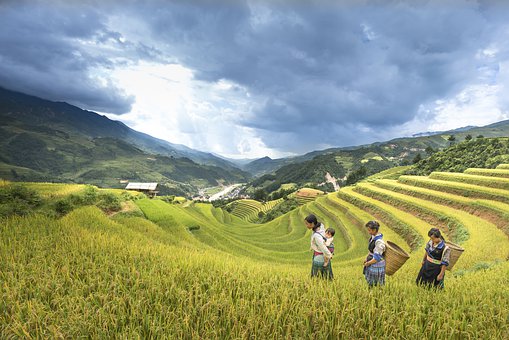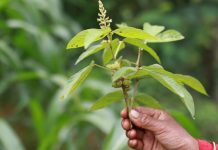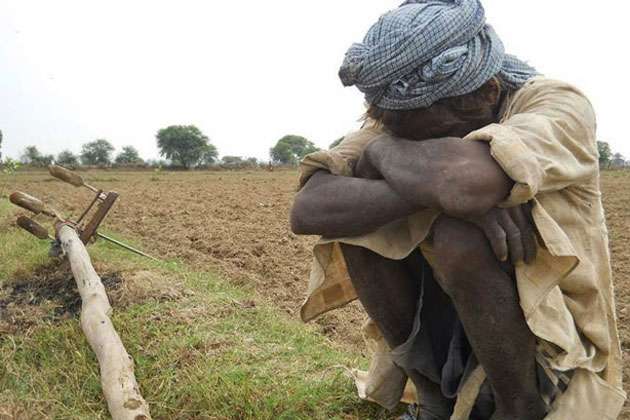
As the summer months approach, a reality haunts most households across the length and breadth of India and that is an impending water crisis. Be it cities, towns or villages, the reality and hardship of living at a time where water crisis is one of the biggest challenges is nothing less than a nightmare. India is destined to face a water shortfall of almost 50% by 2030, if we don’t reconsider our patterns of water usage. In 2019, visuals and images from Chennai and Bangalore summarised what our cities would be with such rampant and growing crisis of water. The statistics that we once read and chose to be indifferent to, no longer allow us the same scope. We can no longer look away from the fact that water crisis is going to be one of the greatest challenges for India in the coming years. Even as we begin to take note of the existence of the water crisis in urban India, we still seem to be far disconnected and dissociated from how rural parts of India deal with this crisis and how people’s lives and livelihoods are impacted by it.
We know that most people in India’s rural regions depend on agriculture for a livelihood and agriculture accounts for the usage of more than 80% of India’s freshwater. 60% of the Indian districts face a problem of either over exploited groundwater or poor water quality. This has happened because 63% of water used for irrigation depends on groundwater and not dams or canals.
Women at the Heart of India’s Looming Water Crisis
Along with a wide variety of other household chores, it is India’s women(primarily in India’s rural areas) who are responsible for fetching water for the family from a nearby water resource. A large part of their time is spent travelling to the water resource and carrying back water often several times a day. The several hours that women have to spend simply fetching water could be utilised by going to school or engaging in productive labour or work. It would not be wrong to say that this prevents women from accessing opportunities for betterment and keeps them at the margins of socio-economic progress. Women represent 37% of the agricultural workforce in India and according to the data produced by the Census of India, nearly 100 million women work in the agricultural sector out of the total workforce of 263 million cultivators and agricultural labourers. What is also interesting to observe is the fact that since there is a high degree of migration of men from rural to urban centres, it is the women who are left grappling with the roles of farm labourers and cultivators simultaneously.
Women Spend More Time in the Fields
A study conducted by Oxfam showed that women spend a greater number of hours in the agricultural field during the cropping season as compared to their male counterparts. Women log 3,300 hours of work in the farm as compared to the 1,860 hours logged by men. When the growing crisis of water is unchecked, it will bring about further difficulties in irrigating agricultural fields or finding irrigation related employment on the fields. This could have far reaching implications on India’s agrarian economy which is already distressed.
Women’s Share in Agrarian Economy and Why They Can Help in Times of Water Crisis?
It is quite interesting to note that women are responsible for producing 60-80% of the food and 90% of the dairy products in India. Women have also displayed their ability to utilise and channelise water resources and thereby deal with India’s impending water crisis, can they be effective champions in providing solutions for their families or communities?
UNICEF carried out a study in India in 2013 to find out what implications could the training of women in the agrarian sector on water management have for the future. The study found that when women were taught about the importance of water management, women have the ability to transmit this knowledge to other members of their families and communities and bring about a greater societal change. This potential makes women a bridge to initiate water management and water awareness among India’s future generations.
Women’s Leadership and the Mobilisation of State Sponsored Funds
Women in India have had a strong voice in Indian politics and have been a force in the population that cannot be negated. If we were to look at the case of West Bengal, we would know that women have had a very strong influence on how government policies and funds are diverted effectively to the agricultural sector. Women who have diverted and influenced government officials for spending and generated income in the agrarian sector have taken up a variety of important measures such as the installation and maintenance of pumps, reviving water wells and irrigation channels etc.
Even in Jharkhand’s Lava, women have taken the lead in the agricultural sector and revived over 450 pumps that had dried up and were in desperate need of restoration. A research conducted in 2000 on water supply projects in Gujarat across 900 villages found that including women in technical and decision making capacities had improved the overall impact of projects in the long run. It was the women who spent more time than men in cleaning and maintaining canals, supervising irrigation, collecting water taxes and building structures for the percolation of water. Women’s participation in the agricultural economy and the revival of water resources in particular is of prime importance. With the correct knowledge and training, women-led collectives have left a lasting impact on India’s agrarian future and shall continue to do so. Women in general have also shown a greater enthusiasm to switch to organic inputs and grow crops that are climate resistant such as traditional varieties of millets that also help them cut down water consumption.
Women’s participation in the agrarian economy has achieved significant results in saving water, utilising already existing resources and promoting the culture of sustainability in agriculture in their communities. The Government of India is presently seeking inputs for its National Water Policy and we can only hope that women are put at the centre of India’s mechanism of water governance. Women are our hope to agricultural sustainability and water management: an impending need of our times.













